Mammal Family Tree Diagram Bears and Raccoons Related
The raccoon is one of the funniest representatives of mammals. Raccoons are very mischievous and at the same fourth dimension sociable, peaceful and friendly, they easily make contact with a person. They are infinitely curious and the smartest among animals forth with dolphins, monkeys, elephants, cats, and dogs.

Clarification and Characteristics
The proper noun "raccoon" comes to us from the Indian word "Arakun", which translates equally "scratching with his ain hands."
Raccoons are predatory mammals. Raccoon dogs are close relatives of raccoons (they are often confused with raccoons).
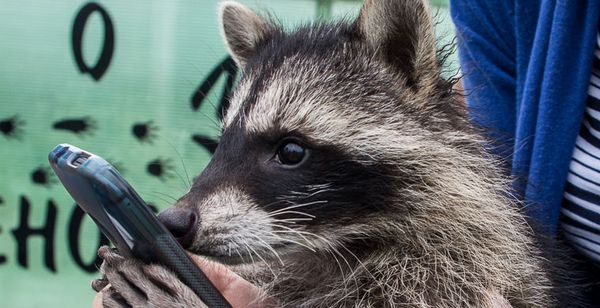
How big is the raccoon? The length of its body is commonly 45-60 cm. The average weight of a raccoon, depending on the species, can vary from two-v to viii-xv kg. Moreover, males are frequently larger than females. The structure of a raccoon'southward trunk is a bit like a fox or a dog. The raccoon'south paws are an of import distinguishing feature of these animals; they have very elongated pads, even reminiscent of human hands. So all raccoons accept splendid grasping abilities.
Raccoons hands climb on copse and can manipulate various pocket-sized objects.
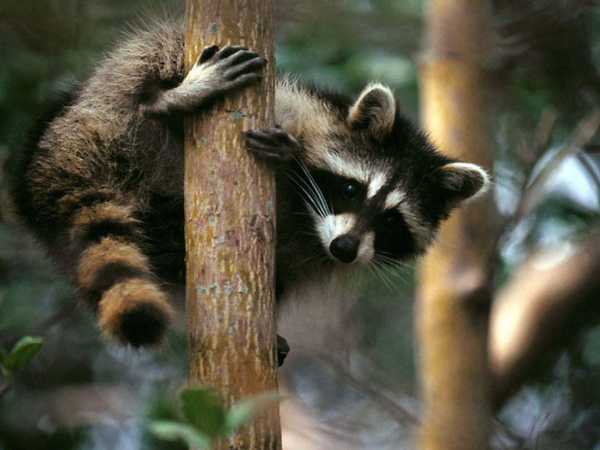
The raccoon'south tail is long and usually fluffy. As for the color, all raccoons accept a grayish-brown color, and their tail is painted with transverse blackness and white stripes.
The raccoon'southward head is very wide, has a short and abrupt muzzle, and small and rounded ears.
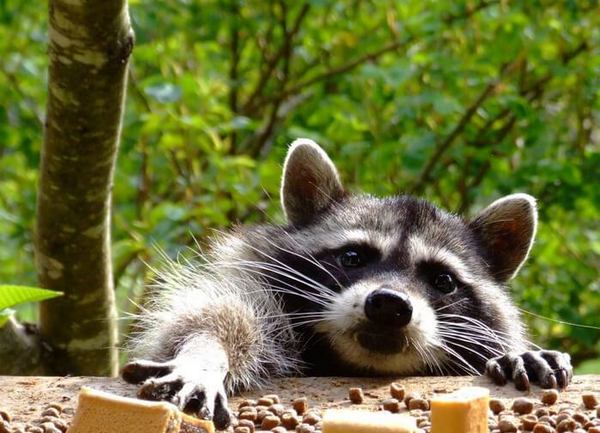
Interesting fact: all raccoons not only easily climb on trees, but also swim well, and can even swim in common cold water, which is facilitated by the special limerick of their fur, which consists of 90% thick undercoat as if particularly adapted past nature to protect information technology from cold h2o.
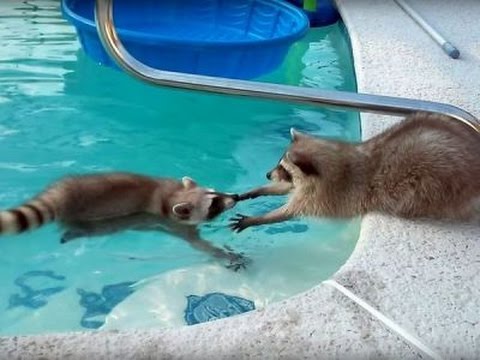
Lifespan
How long practice raccoons live? The lifespan of raccoons at home is 10-15 years. Yet their relatives living in the wood, in the wild, rarely alive even up to 10 years.
Habitat
Where do raccoons live? Raccoons are natives of North and Southward America; they tin can exist constitute in forests from Canada to Argentine republic. Raccoons came to Eurasia with the discovery of America past Europeans. Raccoons populations have been created in many countries of Europe and also in the Caucasus.
Lifestyle
Raccoons are friendly, peaceful, active and curious. Still, despite their peacefulness, they are not cowardly. They tin can bravely defend themselves in case of danger, bite, and scratch. They can also threaten to rumble, trying to scare a potential opponent. In specially dangerous situations, raccoons can flee or pretend to be dead.
Despite friendliness and sociability, raccoons adopt to lead a solitary lifestyle in natural conditions, gathering together only for mating and for winter hibernation. Raccoons, like bears, fall into wintertime hibernation for the winter, and the biological mechanisms of hibernation in raccoons are like to conduct. Hibernation itself in raccoons lasts depending on the duration of the cold menstruum. Canadian raccoons sleep the longest period, in which hibernation tin terminal up to 5 months, only raccoons that alive in the warm tropics of Central America practise not fall into hibernation at all, due to the lack of winter in their habitats.
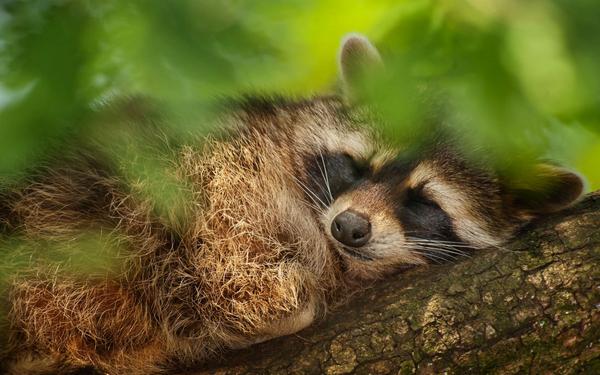
Sleeping raccoon.
Raccoons are a twilight animal, which means they are most active in the evening and at night, preferring to sleep in their cozy lair on the 24-hour interval. But with the onset of the evening, they exit in search of food.
Nutrition
What do raccoons consume? Raccoons are omnivores; so they can consume all kinds of berries, basics, acorns, fruits, and small-scale animals: frogs, big insects, snails, crayfish, and venereal. They are very expert at communicable small fish.
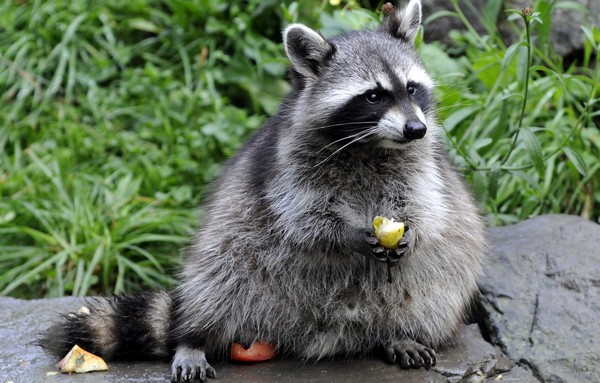
Enemies
In turn, raccoons themselves can become casualty to other larger predators: bears, wolves, lynxes, coyotes, wolverines, and cougars. In trying to escape from their enemies, raccoons often resort to tricks – they pretend to be dead, merely when this fox does not piece of work, and it is non possible to flee, they badly resist, struggling for their life. However, unfortunately, this is not always possible.
Species
There are four types of raccoons, and further nosotros will describe them in more item:
Common Raccoon
This is the most common raccoon living throughout Northward and Primal America, and since some time in Europe.
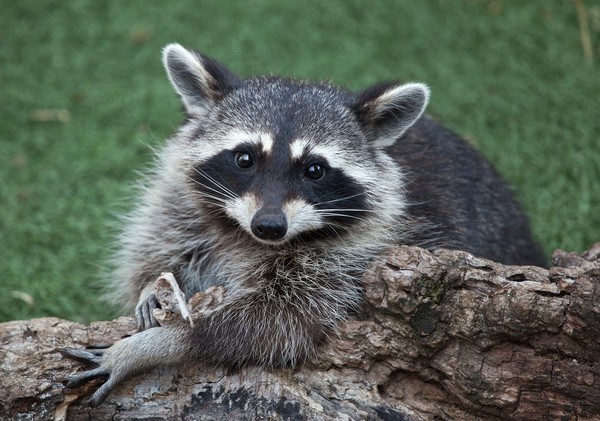
Crab-eating Raccoon (Aguara)
A distinctive characteristic of this raccoon is a characteristic pattern around the eyes, somewhat reminiscent of a gangster mask. The fur of this raccoon is shorter, and the body is more streamlined. The Crab-eating raccoon lives in the jungle of Primal and South America.
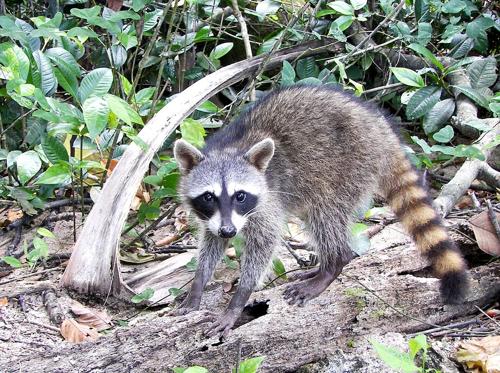
Cozumel Raccoon
This raccoon species is very rare, equally it lives in a limited area, namely on the small island of Cozumel in the Caribbean. The Cozumel raccoon is unlike from its other relatives due to the brownish-gray fur and the presence of a yellowish tint on the tail.
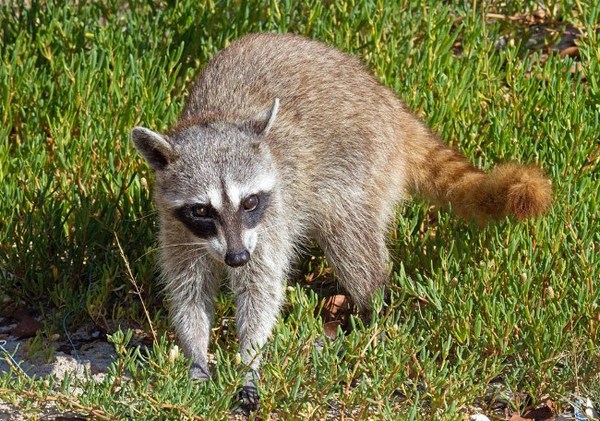
Guadeloupe Raccoon
This species of raccoons is currently on the verge of extinction and is listed in the Red Book. It lives in the humid areas of Guadeloupe, preferring to settle in marshy areas, also equally near ponds, rivers, and lakes. Its appearance is similar to a mutual raccoon.
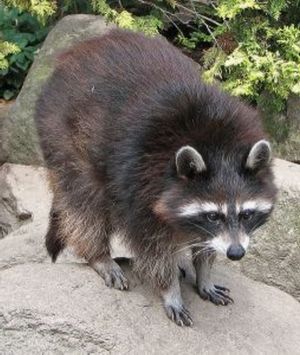
Breeding
Raccoons breed strictly once a yr, during their mating season, which occurs either at the end of winter or the commencement of summertime (depending on the raccoon's habitat, the farther south information technology lives, the faster the mating flavour begins).
These animals do not take special mating rituals, everything is extremely uncomplicated – the male finds the female person by odor and mates with her. The pregnancy of a female raccoon lasts 2 months. Childbirth takes place in some secluded place; usually, it is a hollow of a tree or an abased pigsty of another animal.
From 3 to 8 small raccoons are born at a time. Raccoon babies, like kittens, are born bullheaded and helpless, and at first, they are under the full intendance of their female parent, who feeds them with her chest milk. Yet after only a calendar month of their life, they begin to abound rapidly. By the age of 4-5 months, they are already able to independently obtain food. By the offset year, raccoons achieve puberty and become adults.
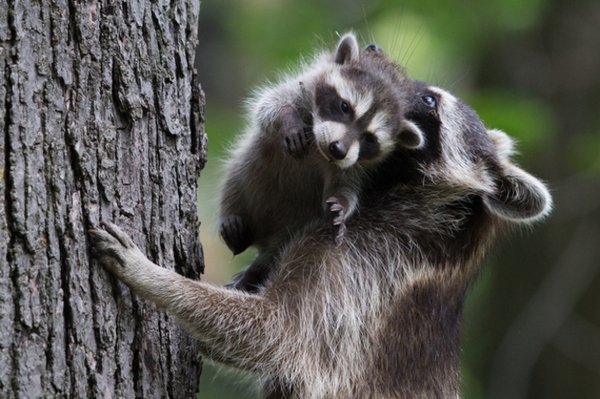
Raccoon every bit a Pet
Raccoons, due to their friendly nature, can be great pets. Just don't take a raccoon if you live in a cramped apartment, as these animals demand infinite, and they won't be on costless-walk like cats or dogs either.
It is very desirable to allocate a separate room for a raccoon; it volition also be his aviary, in which the creature volition experience free. Since raccoons are very smart animals, you lot tin can have fun with them, play, but yous should likewise be conscientious because if a raccoon thinks it is in danger, it tin bite and scratch. Raccoons are peculiarly aggressive during their mating season. Also during the mating season, a male raccoon can marking its territory, which will exist fraught with a very unpleasant aroma. However, a raccoon tin be taught to walk in a tray, virtually like a cat or a dog.
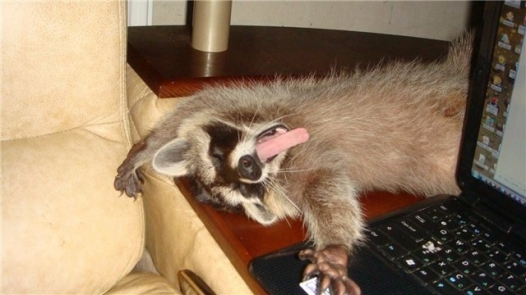
It is also worth considering that raccoons tin be very mischievous, even hooligan animals, living in the house, they can, for case, smashing all the dishes in the kitchen, throwing an expensive TV, and so on. To avert this, they should not exist allow out of their aviary room.
Raccoons are twilight animals, which ways that having such a pet in the house, you will need to conform to its natural rhythm, during the day the raccoon will most likely sleep, but in the evening and night it will be active.
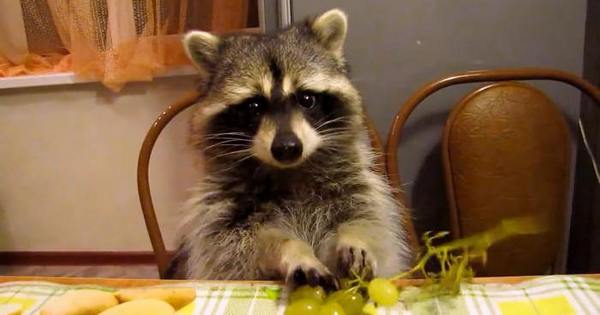
How to Feed a Raccoon?
How to feed a home raccoon? An omnivorous raccoon tin can exist fed the same equally it is in the natural environment: with different berries, fruits, basics. As well, raccoons can exist fed specialized food for cats and dogs, just the only premium. You can requite meat and fish, raw and boiled, most chiefly not too fat. As meat for raccoons, chicken, beefiness, turkey, veal, and rabbit are perfect. Raccoons tin can eat fruits: apples, pears, grapes, bananas, peaches, plums. And vegetables: carrots, fresh peas, asparagus, zucchini.
Interesting Facts
- Raccoons are first-class thieves and tin can steal anything.
- Raccoons are not only splendid thieves, only also first-class burglars, as zoologists once carried out tests on which raccoons figured out how to open up ten castles in xxx minutes to get a treat.
- Communication with raccoons has a beneficial outcome on children with autism; information technology helps them to relax, then fifty-fifty a special term appeared – raccoon therapy (treatment with raccoons).

References and Further Reading
- Kurten, Bjorn; and Anderson, Elaine (1980) Pleistocene Mammals of North America Columbia University Press, New York ISBN 0-231-03733-3
- Thou.-P. Koepfli; 1000. Due east. Gompper; E. Eizirik; C.-C. Ho; L. Linden; J. East. Maldonado; R. K. Wayne (2007). "Phylogeny of the Procyonidae (Mammalia: Carvnivora): Molecules, morphology and the Groovy American Interchange". Molecular Phylogenetics and Development. 43 (3): 1076–1095. doi:ten.1016/j.ympev.2006.ten.003. PMID 17174109.
- Eizirik, Eastward.; Murphy, West. J.; Koepfli, Thousand.-P.; Johnson, W. Eastward.; Dragoo, J. W.; Wayne, R. G.; O'Brien, South. J. (2010-02-04). "Pattern and timing of diversification of the mammalian order Carnivora inferred from multiple nuclear factor sequences". Molecular Phylogenetics and Development. 56 (i): 49–63. doi:ten.1016/j.ympev.2010.01.033. PMID 20138220.
- Helgen, K. M.; Pinto, M.; Kays, R.; Helgen, L.; Tsuchiya, Yard.; Quinn, A.; Wilson, D.; Maldonado, J. (2013-08-15). "Taxonomic revision of the olingos (Bassaricyon), with description of a new species, the Olinguito". ZooKeys. 324: 1–83. doi:x.3897/zookeys.324.5827. PMC 3760134. PMID 24003317.
Video

Author: Pavlo Chaika, Editor-in-Chief of the journal Poznavayka
When writing this commodity, I tried to brand information technology as interesting and useful every bit possible. I would be grateful for any feedback and effective criticism in the form of comments to the commodity. You lot tin can besides write your wish/question/suggestion to my mail pavelchaika1983@gmail.com or to Facebook.
Source: https://www.poznavayka.org/en/zoology/raccoon/
0 Response to "Mammal Family Tree Diagram Bears and Raccoons Related"
Post a Comment